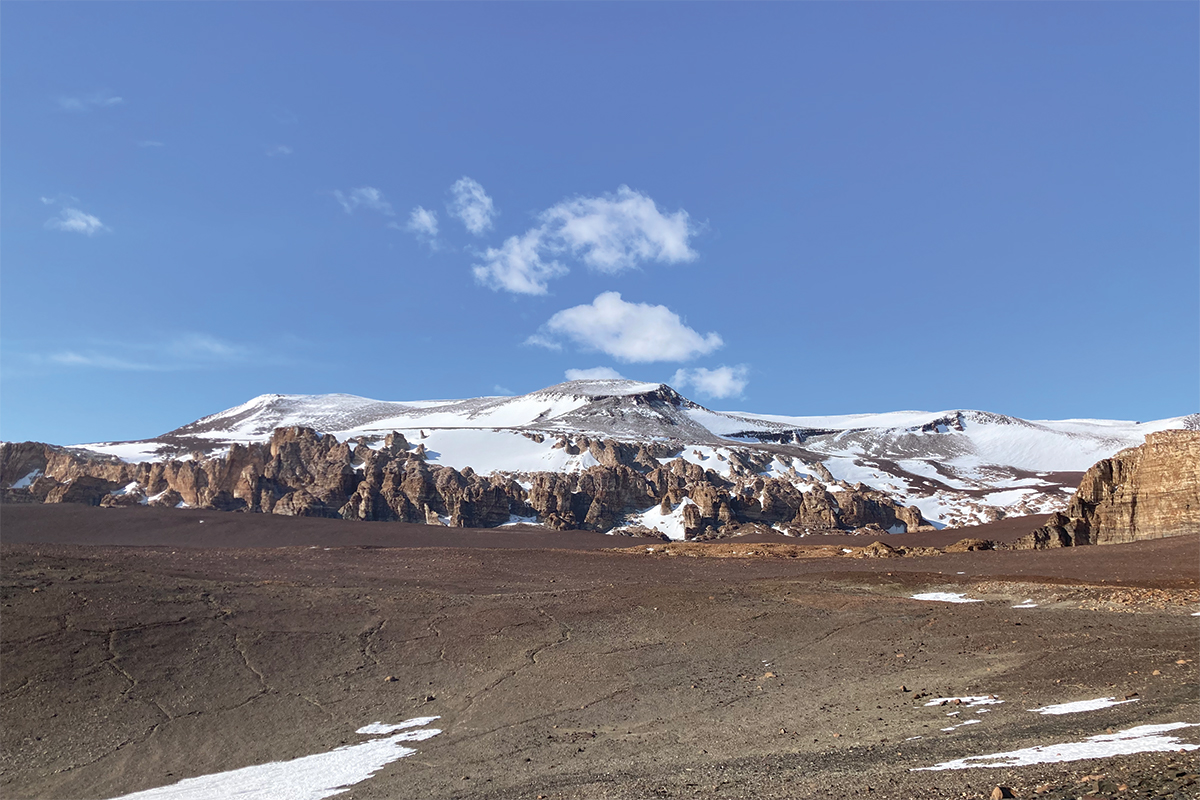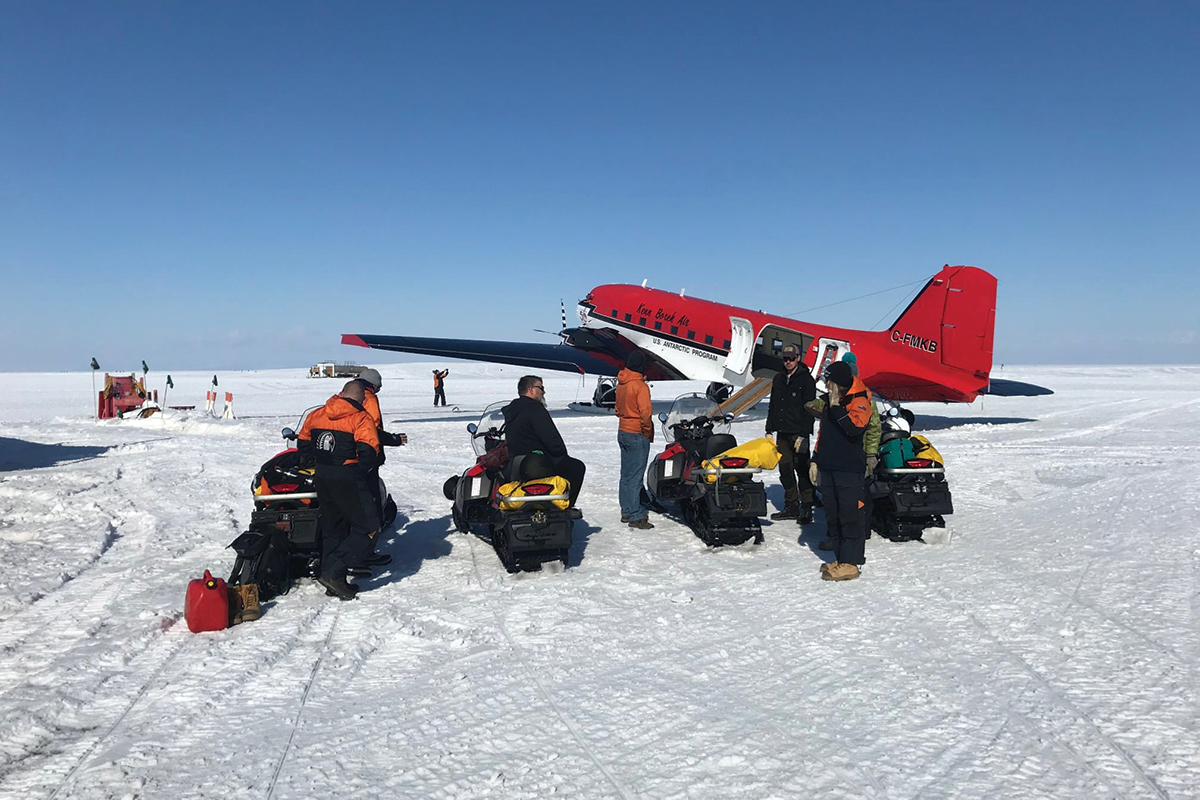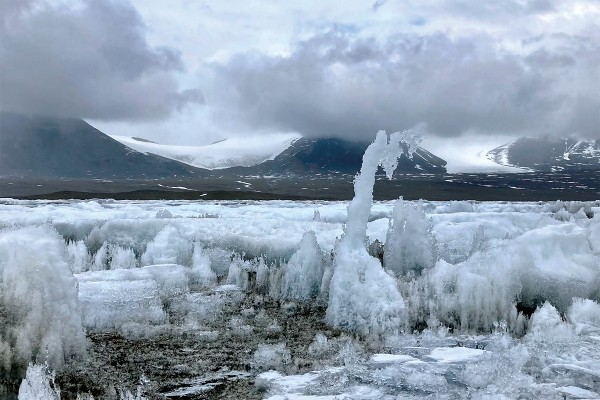Will was soaking in a 250 litre drum filled with hot water. Hundreds of metres away, in a tent, someone was watching Derry Girls. In this moment, to Will, the audio coming from that TV show was the only sound in the entire world.
Will was in Antarctica, at New Zealand’s Scott Base. A student of the Geology Department here at Otago, Will had the chance to take a trip down to ‘The Ice’ as part of his research. In other parts of the world, the thought of visiting Antarctica is like visiting Mars; it might as well be worlds away. But in New Zealand, from our bottom corner of the map, Antarctica is surprisingly reachable. In the Geology Department, for example, it can seem like you either know somebody who’s been or you’ve been yourself. Life down there sounds remarkably similar to a really cold, really science-heavy tramp, and it’s filled with the same charming dramas and daily routines as anywhere else.
“Netflix is useless down there”, said Will, when asked how Derry Girls ended up at the bottom of the world. Your saved items only last for 30 days, and once they’re gone, they’re gone. “But there’s a huge movie collection, hard drives full of films. How they got there, I don’t know.” There’s more at Scott Base than movies, though. Will described a shed filled with costumes for dress up parties, several sets of skis, even a full dinosaur onesie. It’s amazing how much of a normal life is lived in one of the least-normal places in the world.
Scott Base is run by professionals, but that doesn’t mean they don’t know how to have a good time. There are parties, movies, and even some drama. “Honestly”, said Will, “it functions like anywhere else in the world.” Will said that “the biggest beef [on The Ice] is who won tug of war, who won the marathon, and who’s got the best bars. And the answer’s definitely Scott Base. The American bars [at nearby McMurdo Station] are dingy dive bars that don't have any windows.” The American bars, in an embarrassing display of poor taste, are also stocked with Tui beer.
“Oh yeah, we got stuffed over by McMurdo,” said Will. Years ago, “Someone [from McMurdo] went into a grog store in Christchurch and they saw Tui and thought ‘ahhh, that's the iconic NZ beer, everyone must drink that’, so they drink Tui over there.” When Will was on The Ice, this led to a nasty swindle, almost like something you’d expect to see in a cartel drug deal gone wrong. Will said that the Kiwis wanted to trade a freshly shipped-in pallet of beer for something from the American camp, and traded a full pallet of Speights for what looked like a full pallet of Sierra Nevada IPAs. But to the Kiwi’s dismay, after the pallets were swapped, they found that the Americans had only lined the outside of the pallet with “the good stuff”. The inside, they discovered, was just more Tui. He said that “The person who ran the [Kiwi] bar was doing the swap, and they were very disheartened when they found out it was actually Tui – that’s putting it lightly.” It’s not like there’s a LiquorLand Ross Island you can run down to and restock.
Antarctica is a curious place. “Everybody asks me what it was like,” said Will, “and the problem I have is that the first week was amazing, the next few days were cool, and then it just became my life for the next 40 days.” Antarctica was no longer a faraway place in his imagination, it was now just part of his daily routine. “I’d get up in the morning, get dressed, pack my bag, and then get on a Ski-Doo and go out and dig holes and blow stuff up. And that was just my day.”
By “blow stuff up”, Will wasn’t talking about willy-nilly destruction. Will is a geophysicist, and the carefully-planned and precisely executed explosive charges his team used allowed them to image the subsurface of one of Earth’s most important environments. The data retrieved from these experiments is priceless, and can’t be collected without visiting. Despite the importance of the work, Will recalled that a more senior researcher said that “the biggest danger to Antarctica is scientists.”
It’s a tricky balance, and to protect this pristine environment, any work done on The Ice is subject to intensely strict guidelines. Rachel, a student looking at permafrost, was working on a first-of-its-kind experiment in the Dry Valleys, so named because the precipitation rate there is that of a desert. Bare rocks are exposed, and any human footprint is obvious. “I think about this all the time in general when I’m doing other science and creating tonnes of waste with plastic bags and tin foil and all the stuff we need to do that science”, she said. But “the footprint we are leaving are so small, and the steps that they require scientists to go through are quite extensive.” And the payoff is undeniably worth it. “Our IPCC predictions don’t take into account [greenhouse gas emissions from Antarctic permafrost] because it isn't well quantified”, she explained. But that permafrost is melting “7 times faster than expected”, so it's up to students like Rachel to pin down those numbers.
 In the Dry Valleys, where any human impact is most visible, cleanliness precautions are even tighter. Rachel reported that she did not see a single piece of rubbish, and that human waste is flown out by helicopter. “I had a very different experience in terms of the care we had to take, compared to another group there at the same time,” she explained. When she got back to Scott Base and was allowed to relax her protocol, Rachel said “I was like ‘oh what? You guys can just empty your pee bottles out onto the ice?’ Because for us, all of our piss was emptied out into 20L bottles and flown out by a helicopter. We had to fill buckets and bottles to be shipped back. I can't say I’ve had to scrub a poo bucket since.”
In the Dry Valleys, where any human impact is most visible, cleanliness precautions are even tighter. Rachel reported that she did not see a single piece of rubbish, and that human waste is flown out by helicopter. “I had a very different experience in terms of the care we had to take, compared to another group there at the same time,” she explained. When she got back to Scott Base and was allowed to relax her protocol, Rachel said “I was like ‘oh what? You guys can just empty your pee bottles out onto the ice?’ Because for us, all of our piss was emptied out into 20L bottles and flown out by a helicopter. We had to fill buckets and bottles to be shipped back. I can't say I’ve had to scrub a poo bucket since.”
Tamara, a student in the Geography Department, was also working in the Dry Valleys, and confirmed that the toilet situation was a necessary evil in order to preserve the environment. Other measures were taken, too, to preserve the pristine setting. “I guess on the snow, things were different, because it would blow over and cover your tracks,” she said. But in the Dry Valleys, “Even when we’re walking around, you’d try to walk in the footsteps of the person in front of you, so you don’t make new tracks. Imagine if someone new was to come down and there were just footprints everywhere! That would suck.”
Tamara spent six weeks camping in the Dry Valleys with her research partner, totally cut off from the outside world. “Life is just so simple, there’s no distractions, there’s no news, there’s nothing. Everything’s just like ‘oh yep I’m just focussed on what I’m doing right now, walking or collecting samples’. And doing that for six weeks made coming home a bit overwhelming.” Coming home, Tamara said that she realised “Wow, my life moves very fast here, and I didn’t even realise that”. She said that the readjustment to normal life is what hit her the hardest, and that it made her reevaluate the way she lives her day-to-day life.
Other students had a similarly isolated experience. Will was on The Ice when the Tongan volcano erupted, which they didn’t hear about on the news. Instead, a barometer they had built “recorded a large drop in atmospheric pressure”, which turned out to be just hours after the eruption. “It was almost exactly at the point you would expect the aerial shock wave to reach us, based on the speed of sound and our distance away.” Anzac, who went down on a seperate trip, missed a much bigger piece of news: a little virus called Covid-19. The outbreak started while he was remote, and his entire team came back to the news of the pandemic.
It wasn’t that simple, though. Anzac said that prior to leaving for The Ice, Covid had only just gotten to Italy, “so none of us had any idea that it was gonna impact us at all”. He said that they’d joked about it at the time, but once they got back in range of the news, their ship started hauling it towards Argentina to drop off some Americans so that they could get back to the States before Argentina shut down flights. And then the Kiwis had to get back to Aotearoa, by way of the Drake Passage, some of the gnarliest seas in the world. “Halfway across the Drake Passage, we were told we weren’t even allowed off the boat. The port wasn’t gonna take us and we were gonna have to sail back [to Argentina]”, which sounded like a nightmare. Anzac spent nine days isolating on the ship in harbour before they were cleared to emerge into a Covid-stricken world. But it was worth it.
 Anzac, Will, Rachel and Tamara have all played a role in shaping the future of Antarctic science. Newcomers are a vital part of this last, great Antarctic frontier, and Tamara reckoned that these young, new scientists are playing a crucial role in popularising their work at the bottom of the world. “I think a lot of it comes down to what young people have to offer, and a lot of that is outreach based. You’re trying to get people to care about this place that not a lot of people go to, so the more people that get to share their photos, share their stories, and talk about their research, I think that all kinda contributes to keep this place really pristine. I think that makes it really special.”
Anzac, Will, Rachel and Tamara have all played a role in shaping the future of Antarctic science. Newcomers are a vital part of this last, great Antarctic frontier, and Tamara reckoned that these young, new scientists are playing a crucial role in popularising their work at the bottom of the world. “I think a lot of it comes down to what young people have to offer, and a lot of that is outreach based. You’re trying to get people to care about this place that not a lot of people go to, so the more people that get to share their photos, share their stories, and talk about their research, I think that all kinda contributes to keep this place really pristine. I think that makes it really special.”
Tamara, who was the only member of her Geography Department-based team on her trip to The Ice, said that the outreach that young people can achieve is totally different from the outreach achieved by academic publications. With social media, “You start to reach people all over the place, not just people in the academic community doing research, you’re trying to reach people on all levels… it’s good to have people of the next generation go down, because these are the people who will be contributing in the future to preserve this place.”



